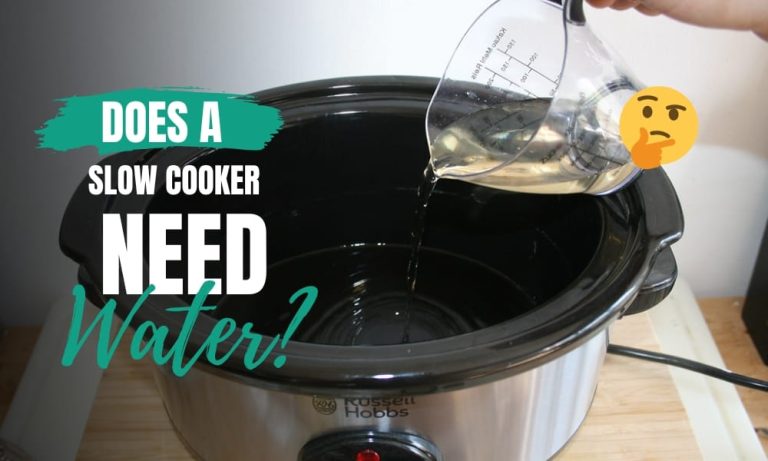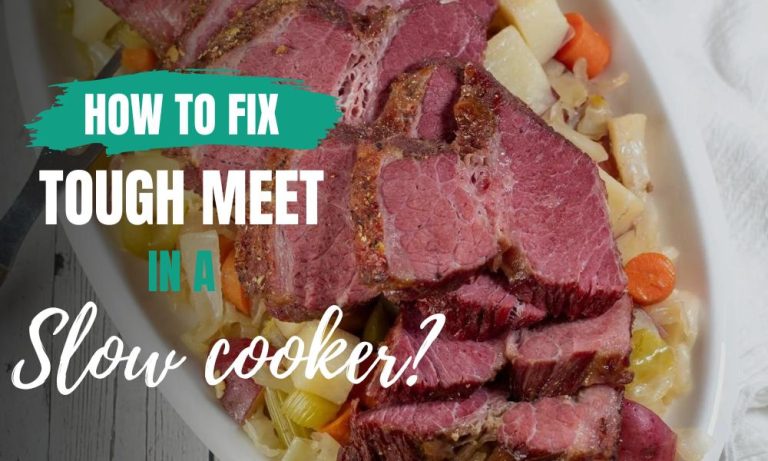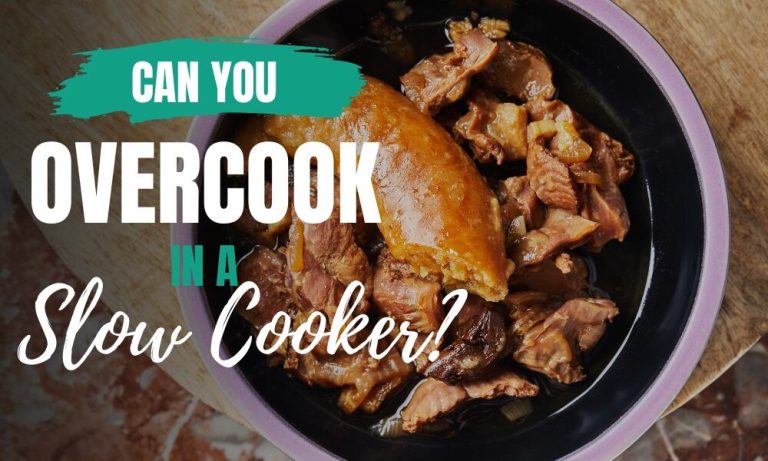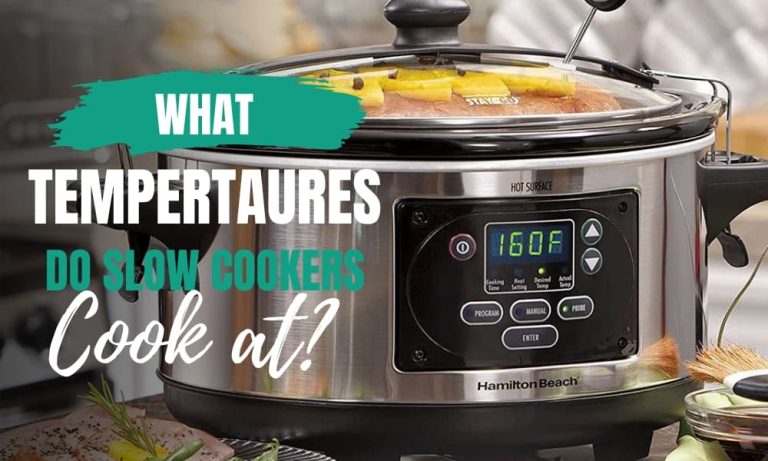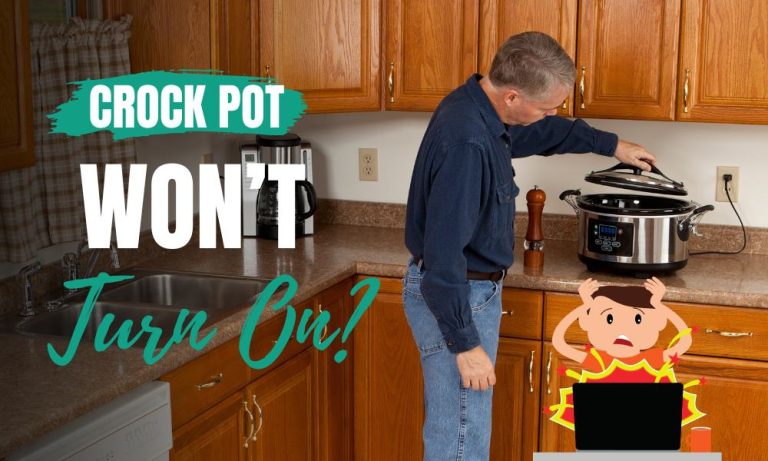How to Slow Cook without a Slow Cooker? – Perfect Alternatives
Are you also wondering about How to Slow Cook without a Slow Cooker? There is no need to fret, as today’s article is about that topic. As we all know, slow cooking can be a great way to prepare meals with minimal effort. But what if you don’t have a slow cooker?
Don’t worry! You can still enjoy the delicious, melt-in-your-mouth meals that come from slow cooking – all without a slow cooker. Let me show you how to slow cook without a slow cooker, making your life easier and meals tastier. You would love to know about these slow cooker alternatives.
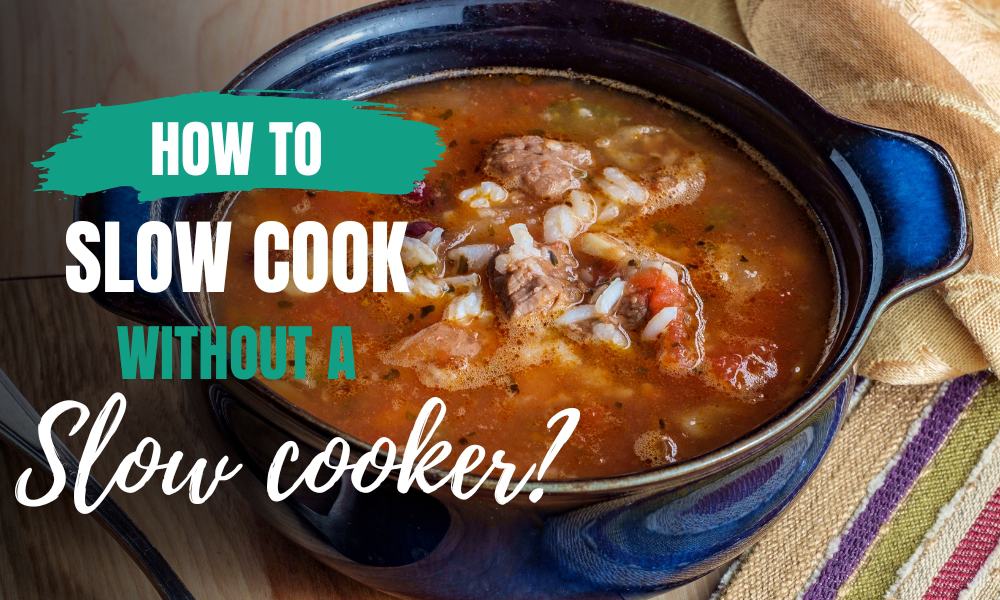
Contents
Why Opt for Slow Cooking?
Slow cooking has gained immense popularity over the years and for a good reason. It allows delicious and nutritious meals to be prepared without having to slave over a hot stove. Slow cooking enhances the flavors of the food, makes meat tender and juicy, and can save time and energy. Slow-cooked meals are perfect for busy weeknights or those needing more kitchen experience.
When you slow cook, the ingredients can simmer in their juices, allowing the flavors to develop fully. Infusing herbs, spices, and other seasonings into the dish is easy. Additionally, slow cooking is an excellent way to make tough cuts of meat tender and juicy.
You can even cook the whole meal in one pot, reducing cleanup time. Slow cooking is energy-efficient, freeing up your stove and oven for other dishes. Slow cooking is a delicious and practical way to make flavorful meals with minimal effort.
Tips for Slow Cooking without a Slow Cooker
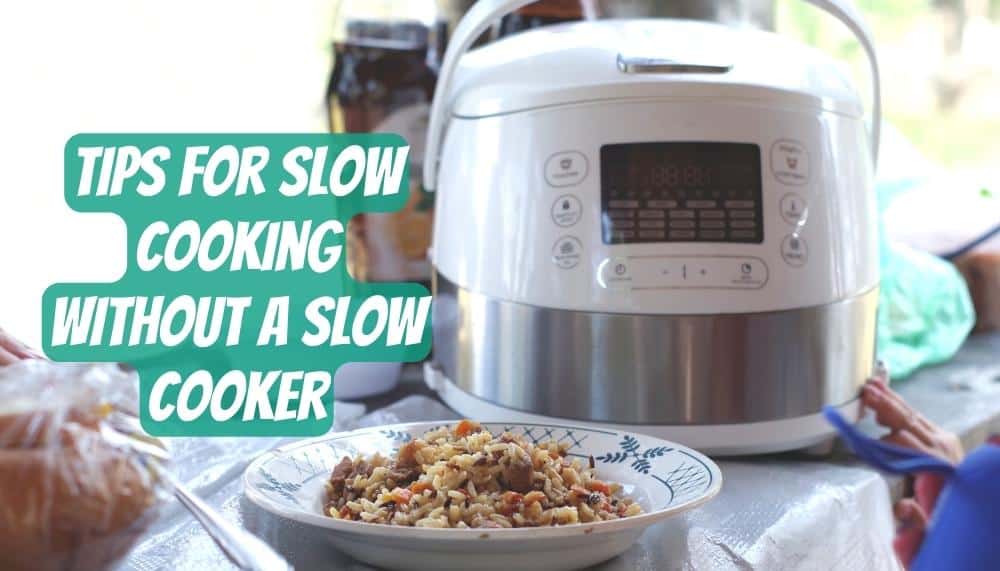
Slow cooking without a slow cooker might seem daunting, but it’s easier. Here are some tips to help you get started. Before we discuss slow cooker alternatives, here are some tips to help you in this regard:
Choose the Right Pot
Select a heavy and large pot to accommodate the ingredients for your recipe. A Dutch oven or a large, heavy pot with a lid will work great.
Brown Meat First
To develop deeper flavors, sear your meat on high heat in a skillet before placing it in the pot.
Keep it Low and Slow.
The key to slow cooking is low heat and slow cooking time. Aim for a low flame or temperature of 200-225 degrees Fahrenheit.
Don’t Peek
Resist the temptation to lift the lid frequently. Each time you do, heat escapes and adds time to your cooking process.
Add Liquid
You’ll need to add some liquid to your recipe to prevent it from burning. Water, broth, or wine work great, depending on the recipe.
Slow cooking is about patience and allowing the flavors to meld over time. With some practice, you’ll create mouth-watering meals without a slow cooker in no time!
How to Slow Cook without a Slow Cooker?
Now let us discuss some alternatives to help you understand how to slow cook without a slow cooker.
Slow Cooking on a Stovetop
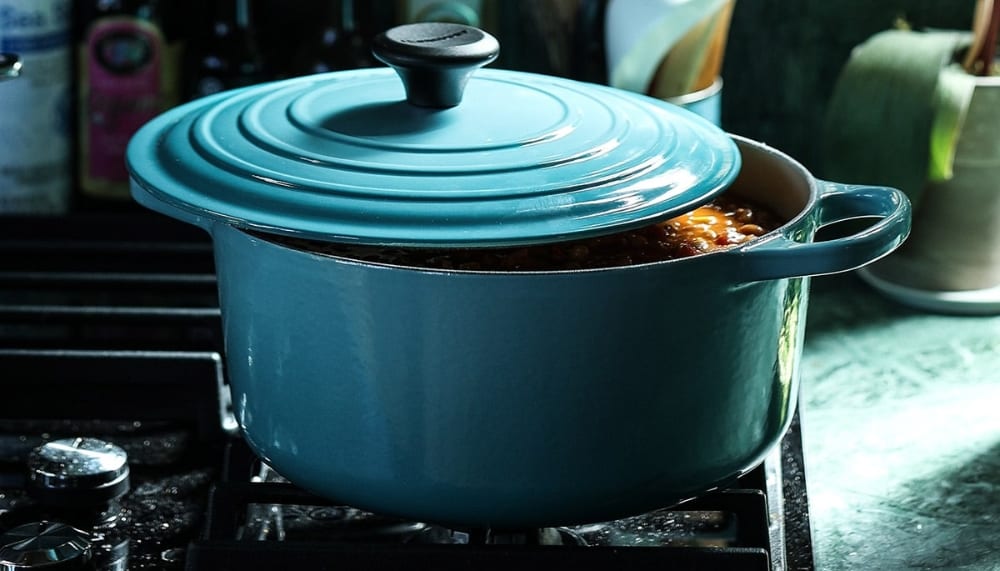
Slow cooking on a stovetop can be an efficient and effective way to make delicious meals without a slow cooker. Here are some tips to keep in mind:
Also, read can you put a crockpot on the stove?
Slow Cooking in an Oven
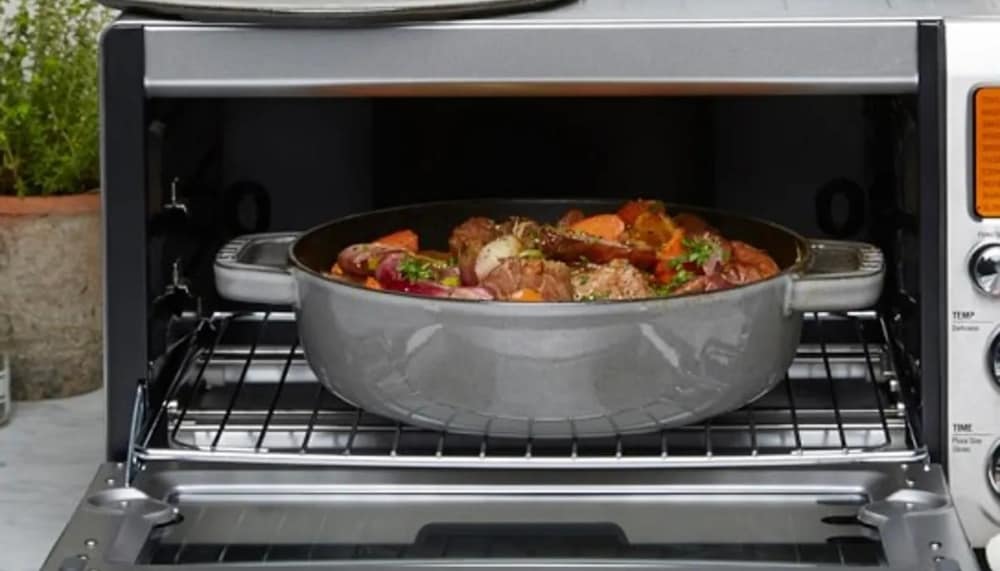
Using a Rice Cooker for Slow Cooking
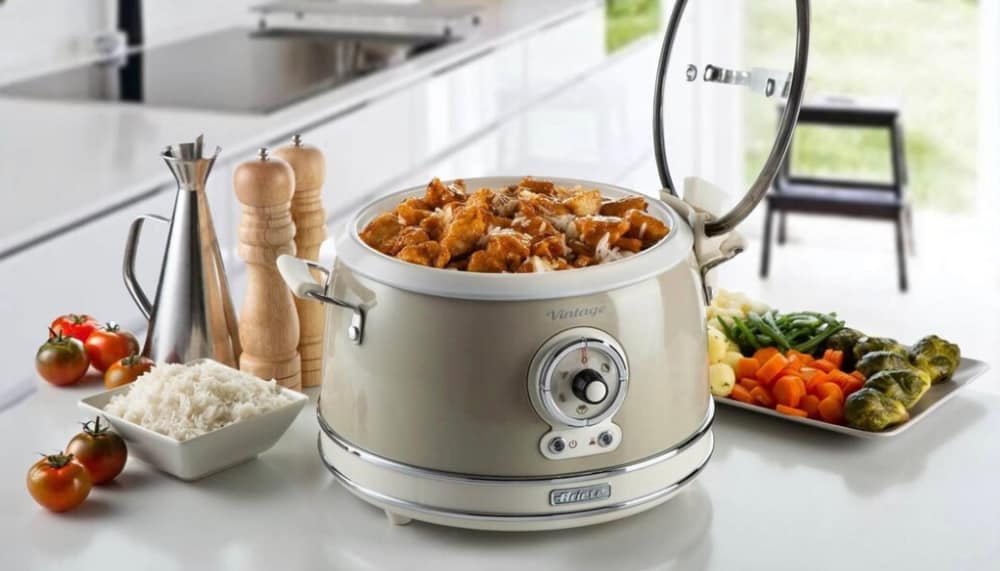
Using a rice cooker for slow cooking is relatively easy. Here’s how you can do it:
Check if your rice cooker has a slow-cook function. Suppose it doesn’t, don’t worry. You can still use it as a slow cooker. However, ensuring your rice cooker has a temperature control feature is essential.
Prepare your ingredients. You can use your rice cooker to cook a wide variety of dishes. However, it’s important to note that some ingredients may require more preparation. For example, if you’re cooking meat, you may need to sear it first to give it a nice crust.
Place the ingredients in the rice cooker. Once your ingredients are ready, place them in the rice cooker. Ensure you don’t overcrowd the cooker, affecting the cooking time and temperature.
Add the liquid. Most slow-cooked dishes require a liquid such as broth, water, or wine. Make sure to add enough liquid to cover the ingredients.
Set the temperature and cooking time. If your rice cooker has a slow-cook function, set it to the desired temperature and cooking time. If not, you must manually adjust the temperature and cooking time. Generally, slow-cooked dishes should be cooked at around 200-250°F for 6-8 hours.
In the next section, we’ll look at other small appliances for slow cooking.
Other Small Appliances to Use
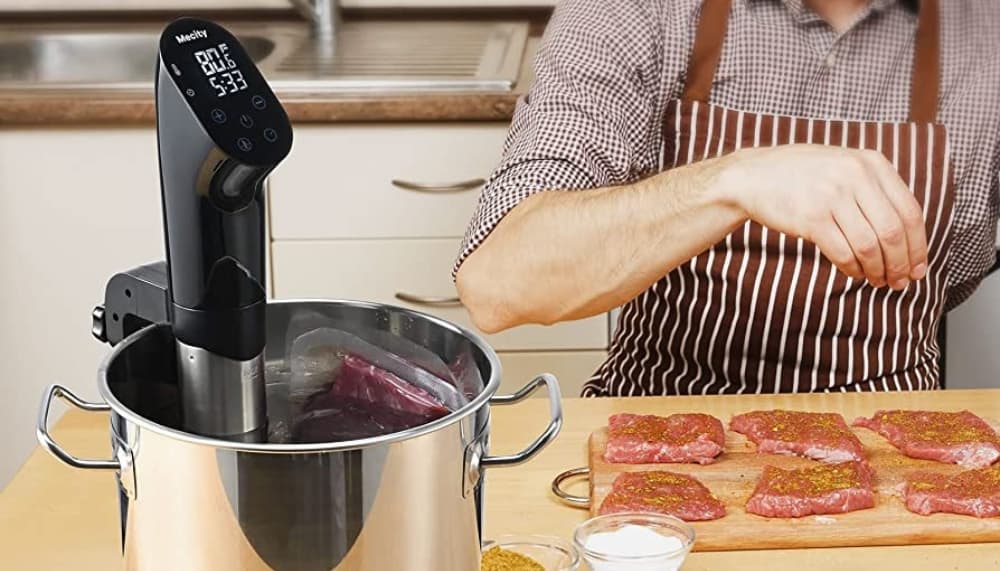
Aside from the options mentioned above, there are also a few other small appliances that you can use for slow cooking. One such option is the sous vide machine, a precision cooker that circulates water at a specific temperature to simmer food.
While these appliances may not be as common as slow cookers or stovetops, they can be excellent for certain slow-cooked meals. For example, sous vide machine is perfect for cooking meats like steak or chicken breasts to a precise temperature, while a multicooker can create stews, soups, and casseroles with minimal effort.
The key is choosing an appliance that will work well with the type of food you want to cook and fits within your budget and kitchen space. Experimenting with different appliances can be fun to mix up your cooking routine and discover new recipes.
Troubleshooting Slow Cooked Meals
Slow cooking is a great way to prepare meals, but it can be frustrating when your meal turns out differently than you want it to. Here are some common problems with slow-cooked meals and how to fix them.
Meat is Tough: If your meat is tough, it’s usually because it needs to cook longer. The longer you cook meat in a slow cooker, the more tender it will become. Try cooking it for an additional hour or two.
Vegetables are Mushy: Overcooked vegetables can become mushy and lose texture. To avoid this, add your vegetables to the slow cooker during the last hour or so of cooking.
Too Much Liquid: If your meal is too watery, it may be because you added too much liquid. Try reducing the amount of liquid you use next time.
Not Enough Liquid: If your meal is too dry, it may be because you need to add more liquid. Try adding a bit more liquid to the slow cooker next time.
Burnt or Stuck-on Food: If food is burning or sticking to the sides of your slow cooker, you may need to lower the temperature or add more liquid. Be sure to stir your food occasionally to prevent sticking.
Remember, slow cooking is all about trial and error. Feel free to experiment and adjust until you find the perfect recipe. Happy cooking!
FAQs
Final Words
Slow cooking is a fantastic way to get tender, flavorful meals without much effort. And you don’t need to invest in a slow cooker to achieve these delicious dishes. You can use a few other methods that are just as effective.
The stovetop is the easiest way to slow cook and works well for soups and stews. Just be sure to monitor the heat and stir occasionally to prevent sticking. Slow cooking in the oven requires a bit more attention but can be great for roasts and casseroles. A rice cooker can also work for slow cooking if it has a “keep warm” setting.
Regardless of your chosen method, always use a lid to trap the steam and maintain low, consistent heat. And remember that the longer you cook, the more flavorful and tender your dish will be.

Mery Webber
Mery Webber, the founder of Kitchen Aims, is a passionate home cook with extensive experience in the kitchen appliance industry. Through her blog, she aims to share her knowledge and help readers create the perfect kitchen.

